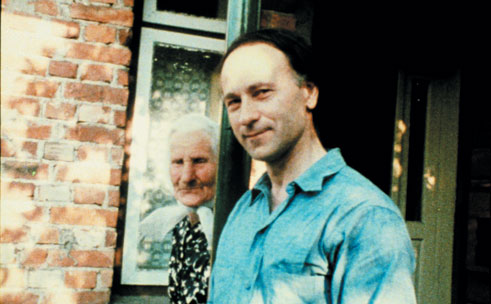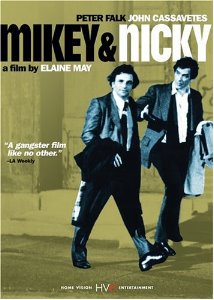One of my first published reviews, which appeared in the November 2, 1972 issue of The Village Voice, this was commissioned by Andrew Sarris, bless him. I was always grateful for this opportunity to write about a film that I love, and that I continue to cherish. — J.R.

Jonas Mekas’s Reminiscences of a Journey to Lithuania, a film dedicated “to all the displaced people in the world,” has itself become the object of some displacement. Screened jointly with Adolfas Mekas and Pola Chapelle’s Going Home at the New York Film Festival, defined in the program as a non-narrative film and by its author as a home movie, it has become a casual victim of “convenient” programing and somewhat deceptive labels. Whatever “non-narrative” and “home movie” mean — and I think the latter describes Going Home pretty accurately — they are less than helpful in describing the achievement of what must be called Jonas Mekas’s testament. If they must be understood, let it be understood that Reminiscences is a home movie about homelessness, a non-narrative film with one of the most beautifully constructed and articulated narrative lines in autobiographical cinema.

Going Home, a rambling collection of travel photos and family poses, resembles the jazzy surfaces of Hallelujah the Hills, joke titles and all, and registers not unlike a boastful list of possessions (the secret metaphysic behind every family album): this is my garden, my Moscow, my family, my Lithuania. Read more

The following article appeared in the February 23, 1990 issue of the Chicago Reader. –J.R.
ART OF MUSIC VIDEO
For people like myself who have conflicted feelings about music videos as an art form, the four-part series Art of Music Video — playing for the second time at the Film Center this weekend — offers lots of material to consider. Even so, this presentation of a hundred videos assembled by Michael Nash of the Long Beach Museum of Art involves a number of curatorial decisions that I have problems with. Before considering the videos themselves, let me list these problems; some of them are overlapping rather than consecutive, but putting them in list form will help to give some idea of how many boats this particular series is missing:
(1) Historical. Although Nash’s selection is media-specific—that is, generally limited to videos—one of his four programs, “Vanguard Re-visions,” has a subcategory called “Experimental Film: Invention and Intervention,” consisting of films made by Bruce Conner, James Herbert, and Jem Cohen between 1961 and 1989.
While I have no quarrel with the inclusion of these figures, it’s clear that this attempt to give a foreshortened art-history perspective rules out a lot more of the history of music videos and their precursors than it includes. Read more
This was written in October 2003 for the DVD released in 2004 by Home Vision Entertainment. DVD Beaver persuasively argues that this edition (currently unavailable, alas) is far superior to the Region 2 PAL release on Odyssey Video. — J.R.

Thanks to an appointment book, I can pinpoint that the first time I saw Mikey and Nicky was on January 7th, 1977, at New York’s Little Carnegie. The experience was a shock. In contrast to A New Leaf (1971) and The Heartbreak Kid (1972) —- Elaine May’s two previous features, both slick (if caustic) Hollywood comedies —- this was a harsh gangster drama in drab urban locations, and, even stranger, a near-facsimile of John Cassavetes’s raw independent features, costarring Cassavetes himself as Nicky and one of his regulars, Peter Falk, as Mikey. The editing was full of continuity errors, the garrulous performances free-wheeling and seemingly full of improvisations (as I then wrongly assumed Cassavetes’ own features were). But the brutal force of an alternately nurtured and betrayed friendship between two small-time crooks over one long night in Philadelphia was so ferocious that it left me shaken as well as bewildered.

The second time I saw the film was in 1980, when I programmed it for “Buried Treasures” at the Toronto Film Festival; this inadvertently became the world premiere of the film’s final version. Read more





